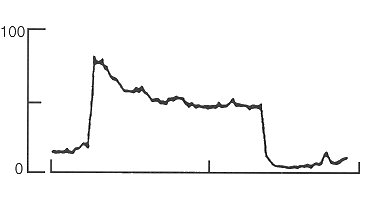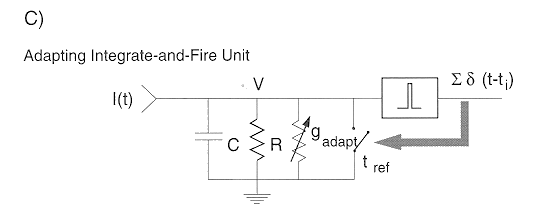
Adaptation is a temporal process in perception which is experienced widely in our everyday life. As an example, if you keep you right hand in cold water for a while, you feel the water is not as cold as you first dip you hand in. Moreover, if you put both hands in hot water right away, your right hand feels the water is much hotter than how you left hand feels. We will see later that adaptation plays an important role in some psychophysical experiments. At the neuronal level, adaptation is represented by the reduced firing rate after a stimulus was first presented. As an example, the followin gis the temporal response of a cat ganglion cell (X-type) to a light turned on for about 2 seconds.

Adaptation can be simulated by
modifying the integrate-and-firing model with an added variable resistance
Radapt whose value is reduced each time a spike occurs. As a result,
Radapt approaches 0 exponentially with a time constant
![]() .
Now the model is described as
.
Now the model is described as

